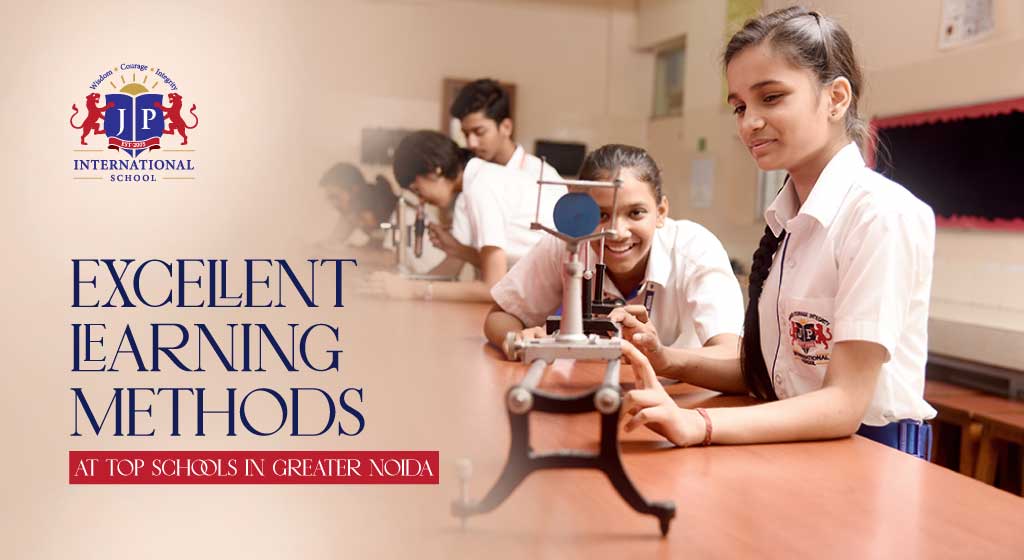It can be difficult to maintain concentration, manage behavior, and encourage active participation while working with children and teenagers. Furthermore, teaching adults presents its own set of difficulties: adult learners often find it difficult to assimilate new information and shift old thought habits. There are several ways to approach learning methods although it is not simple as it sounds. Although here at one of the top schools in greater Noida, every method is tested and only the ones that have a positive impact on children are taught.
Indoor Games are The Best
Gamification, or game-based learning, is a terrific approach to engage kids, especially those in primary and secondary school. The definition of gamification is a strategy that implements game-like elements into non-gaming activities to enhance motivation. Since children are very interested in games, from video games and mobile applications to simple playground and board games, this can be a great place to start. Playing video games has been connected to dopamine production, Dopamine being the hormone responsible for making and keeping us happy, As a result, bringing some ideas from video games into education can have a good impact on students’ moods, motivating them to succeed. However, it’s important to note that gamification isn’t appropriate for every situation. Lessons sometimes necessitate more serious dialogues. Furthermore, too much game-based learning is likely to take away some of the fun and incentive that children experience.
Active Learning
Teachers become more actively engaged in how they teach the curriculum and enhance each student’s learning potential with the goal of educating mindful learners who actively pursue information. They combine a range of… strategies to ensure that kids learn not only more, better, and faster, but also smarter.” These words by active learning advocate James Ballencia are true to this day.
Although conventional this method is very popular across the world. Some active learning strategies include:
- Reciprocal questioning: Have students come up with questions for the class on a recent lesson or concept.
- The pause procedure: Take a break every 10 to 15 minutes so that students have time to discuss, ask questions, or solve problems.
- Muddiest point: Ask students to write down which point in the lesson is the least clear to them.
Experiential Learning
Interacting and engaging with the world and people around us is the only way we can gain experience. This learning theory is based on David Kolb’s experiential learning cycle, and it takes into account the role of all of our experiences in learning, from emotions and cognition to our surroundings.
According to Kolb’s 1984 theory, the learning cycle is divided into four stages:
- Active experimentation: The student will evaluate their reflections and previous lessons during the final stage before retrying the original experience to assess whether any improvement has been made. This will result in a new concrete experience, and the cycle will begin again.
- Abstract conceptualisation: The learner must then make sense of their reflections and devise a strategy for moving forward. They may devise a plan of action and seek advice from experts.
- Concrete experience: When a learner has a new experience, such as riding a bike for the first time, they are said to be in this stage.
- Reflective observation: Following the concrete experience, the learner must reflect on their actions and see others doing the same.
Online Learning
Although the majority of the teachers were not familiar with this learning method prior to the COVID-19 outbreak, some teachers have always preferred to work online. Working from home, setting their own hours, and being their own boss are all advantages that online tutors frequently appreciate. But, exactly, what does online teaching entail? Educating others over the internet, whether through individual or group video conferences, webinars, or messaging platforms, is what it is all about. To keep pupils engaged, it’s usually a combination of elements. The benefit of online learning is that it is available to a large number of people. Although not everyone is able to attend school, an increasing number of people have access to the internet. Of course, technology can be a barrier to education as well, but this barrier is, thankfully, breaking down as time goes on.
Differentiation
In this method, teachers can differentiate in a variety of ways, including how students access knowledge, the types of activities they engage in to master a topic, the final result of learning, and how the classroom is organized. Differentiation can take many forms, such as having students read books at their own reading levels, providing pupils with alternative spelling lists, or meeting in small groups to reteach concepts. This is a tried-and-true method of teaching mixed-ability classrooms, but it can work if handled carefully.
For example, depending on the aptitude of the students, some teachers may choose to teach entirely different subjects. However, kids may feel ashamed, and teachers may become burned out as a result of attempting to do too much at once. Differentiating instruction through a range of mediums, such as books, films, visuals, and vocal presentations, is a better way to go. This allows a variety of pupils to participate and comprehend the topic of the session.
Blended Learning
Blended learning combines traditional face-to-face instruction with technology-based instruction. Although blended learning existed before the COVID-19 pandemic, it has grown in popularity among schools and institutions in the last two years. Because it bridges the gap between traditional and technology-based methods, a blended learning model can benefit both students and teachers. It incorporates enough technology to keep students engaged and focused, but it also gives time for kids to speak with teachers and classmates in person, which may be extremely beneficial. here are some of the examples of learning –
- Flex Blended Learning: The ‘Flex’ is one of the Blended Learning models, and its paradigm is one in which… “a course or subject in which online learning is the primary mode of instruction, even if it occasionally directs students to offline tasks.” Students follow a flexible, personally tailored timetable that alternates between learning modalities.
- Flipped Classroom: A ‘Flipped Classroom,’ perhaps the most well-known kind of blended learning, is one in which students are introduced to a subject at home and then practice working through it at school with the help of a teacher and/or classmates. Traditional roles for each space are ‘flipped’ in this fashion.
Conclusion
To encourage children to enjoy studying, we work with innovative technology that should generate revenue while also fostering their mental health. We use both broad media ways that aid students with learning activities readily because our primary goal is to involve youngsters during the learning programme in some of the best schools in Greater Noida.




